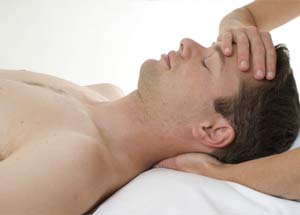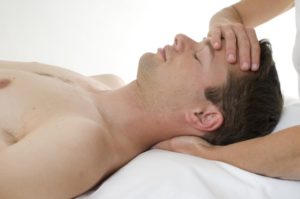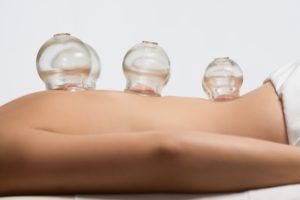
Reflexology

wolving and balancing, the cranial reflexology massage
What is a reflexology massage?
Reflexology is a whole-body reflexology treatment that uses advanced natural healing techniques. The sensible combination of different reflexology techniques creates a holistic and natural treatment concept that is even more comprehensive and effective than the treatment of the foot reflex zones alone. Depending on the symptoms, one or more of the following treatment methods can be used:
- Massage of the characteristic muscles
- Techniques for adjusting instead of straightening vertebrae and joints
- Postisometric relaxation
- Foot reflexology
- Hand reflexology massage
- Cranial reflexology massage
- Ear reflexology massage
- Cupping
- Wraps and packs
Reflexology includes gentle stretching of the muscle and joint connections, massage of the corresponding characteristic muscles with fascia/connective tissue and cupping massage techniques, as well as specific pressure and massage techniques to stimulate the reflex zones on the feet, hands, skull and ears. In addition, developmentally and embryologically relevant skin and reflex zones on the whole body can be treated by massaging, cupping, wrapping or packing.
Areas of application:
- muscular tension
- Back pain
- Shoulder/neck pain
- Stomach and intestinal complaints
- Stress and tension
- General exhaustion
- Menopausal symptoms (hormonal disorders)
- Menstrual cramps, PMS
- Whiplash
- Headaches and migraines
- Circulatory problems
- Sleep disorders
- Allergies
- Lymphatic complaints (reflex lymphatic treatment)
- Scar removal
and much more.
History of the development of reflexology

In addition to the feet, reflex zones are also found on the hands, ears and skull
Reflexology, like foot reflexology, is based on the theory and science that certain areas of the body on the feet, hands, ears and skull as well as developmental-embryological skin areas (cells) are connected to corresponding bodily functions, organs, glands, muscles and body parts.
The reflex cupping zones and characteristic muscles are largely based on embryology and the specialization of cells during cell division and the development of the foetus in the womb. These are divided into ectoderm, mesoderm and entoderm.
- The skin (dermatome), nervous system (neurotome) and skeleton (sclerotome) form from the ectoderm.
- Connective tissue (fascia) and muscles (myotome) form from the mesoderm.
- Vessels (vasotome) and internal organs (enterotome) form from the endoderm.
As these originate from the same cell network or are innervated by the same spinal nerve, it is possible to classify them into corresponding body segments and reflex zones.
The reflex zones on the hands and feet, on the other hand, are based on the theory and findings of Dr. Wiliam Henry Fitzgerald that the hands and feet are a microcosm of the entire organism (body), in which all organs, muscles, glands and other parts of the body can be found in corresponding reflex zones.
This explanation is not exhaustive and is therefore only intended to give a rough insight into the functional and effective principle of reflex zone massage.
How a reflexology massage works

Cupping of reflex skin zones is a tried and tested natural treatment method used by naturopaths.
Specific stimulation of the reflex zones of the body (through pressure, massage, cupping, wraps or packs) triggers reactions in the corresponding body systems, resulting in relaxation or stimulation. This initiates a gradual return to inner balance. Reflexology can therefore have positive effects on bodily functions, muscles and the psyche.
The muscles, organs, glands, nerves and body parts connected to the skin and reflex zones are better supplied with blood, stimulated or relaxed. Displaced vertebrae in the cervical, thoracic or lumbar spine can gently return to their natural position and joints can move more freely.
Self-regulatory bodily functions of the organs and body glands are also reactivated and harmonized. This allows blocked energies throughout the body to be released, any YIN/YANG imbalances to be corrected and mental and physical tension to be reduced and brought into balance.
Reflexology treatment procedure
1. recording of personal details and medical history
2. brief discussion of the patient's condition, personal issues and complaints
3. visual and tactile findings, localize scars and conspicuous areas of skin
4. reflective treatment of the reflex zones, cupping zones and characteristic muscles if necessary
5. final discussion
Duration of treatment
Please allow sufficient time for your arrival and for the treatment so that you can experience the success of the treatment without time pressure and can relax completely.
As a rule, a reflex zone massage takes between 60 and 90 minutes, especially in the case of any scarring and during the initial anamnesis.


